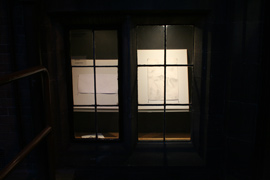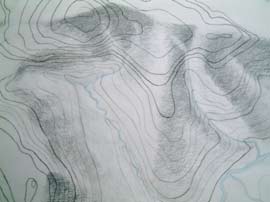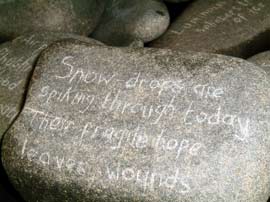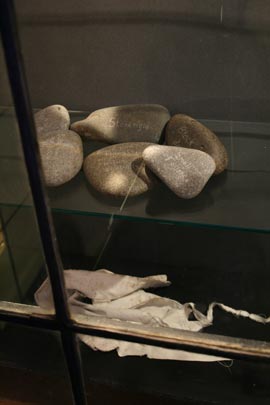19th April - 14th May
Brighid Mulley
AFTER
This body of work springs from a continuing fascination with the material remains of cultures – what is left, why these particular objects survive, how they are interpreted. The mystery and power of the remnants of other lives, especially those lives which seem far removed or strange to us, are fuel to the imagination, a source of wonder as we consider possibilities beyond our own direct experience. A collection of objects placed in particular relationships to one another will suggest various interpretations, and the association of written material with objects creates further layers of possibility. Written accounts of strange and terrible natural phenomena have amazed those hearing or reading of them at least since the time of the biblical Flood. The letters of Pliny the Younger to the historian Tacitus recount his experiences of the horror of the eruption of Mount Vesuvius in 79AD, and more recently we have accounts of the tsunami which devastated parts of South East Asia in December 2004, or of the earthquake in Haiti in January 2010. Only a few days prior to the time of writing it has been reported [1] that scientists at the Leibniz Institute, Berlin, Heidelberg University, and Leipzig University in Germany have compiled evidence that the Ten Plagues of Egypt as recounted in the biblical Book of Exodus may have been based on real events caused by climate changes and natural disasters occurring as far away as the eruption of Thera on the Greek island of Santorini.
Recent speculation concerning the possible end of our own civilization as a result of some environmental disaster, natural or man-made, has led me to consider how fragments of lives caught up in catastrophic events could survive to be discovered by inhabitants of a future world. The stones with their scratched texts resemble stones familiar to us from archaeological excavations, such as rune-stones, and their association with a group of small personal items reinforces this impression. Perhaps they comprise a hoard of items of sentimental rather than monetary value – the child's milk teeth and fragments of clothing have a fetishistic quality. However, this is just one possible interpretation: the relationships between the objects could support other narratives. Is this a collection of writings and objects assembled by an aberrant individual? The texts themselves are far removed from a straightforward narrative. They are observations which appear to record extreme, even cataclysmic events, but they also speak of the return of growth and life – are these memories, or the record of a resurgence of life following disaster? Are the child's teeth precious relics of a lost life or do they signify growth and change? What is omitted is as important as what is included. The stones are rounded, small river stones, eroded by the action of water over the ages, themselves witnesses to change over a long time-scale.
The drawings accompanying the objects create a further layer of speculation and another contextual dimension, relating to the environment in which they were 'discovered' and positing the existence of someone who 'discovers'. This provides a further impetus towards a piecing together of a possible narrative. However, no finite solution to a puzzle is intended: I wish to stimulate an opening up rather than a closing down of possibilities. I see the collection of drawings, texts and objects as a prompt to the imagination, which is as open ended as our individual and collective futures.
[1] See http://www.telegraph.co.uk/science/science-news/7530678/Biblical-plagues-really-happened-
say-scientists/
Biography: Brighid Mulley is an artist and writer, based in the North East of England. She studied Fine Art at the University of Northumbria, graduating in 2007. Working in film, video and installation, her work has been exhibited in the UK and abroad. In 2008 she curated a retrospective of the films of artist Sarah Pucill at the Star and Shadow Cinema, Newcastle upon Tyne. Her writing has been published in soanyway, an online experimental writing magazine, and she also makes public readings of her poetry. She studied Ancient History and Greek and Roman Culture at the University of Newcastle upon Tyne, 1985 – 1988, and her recent work has been influenced by her interest in ancient cultures.



